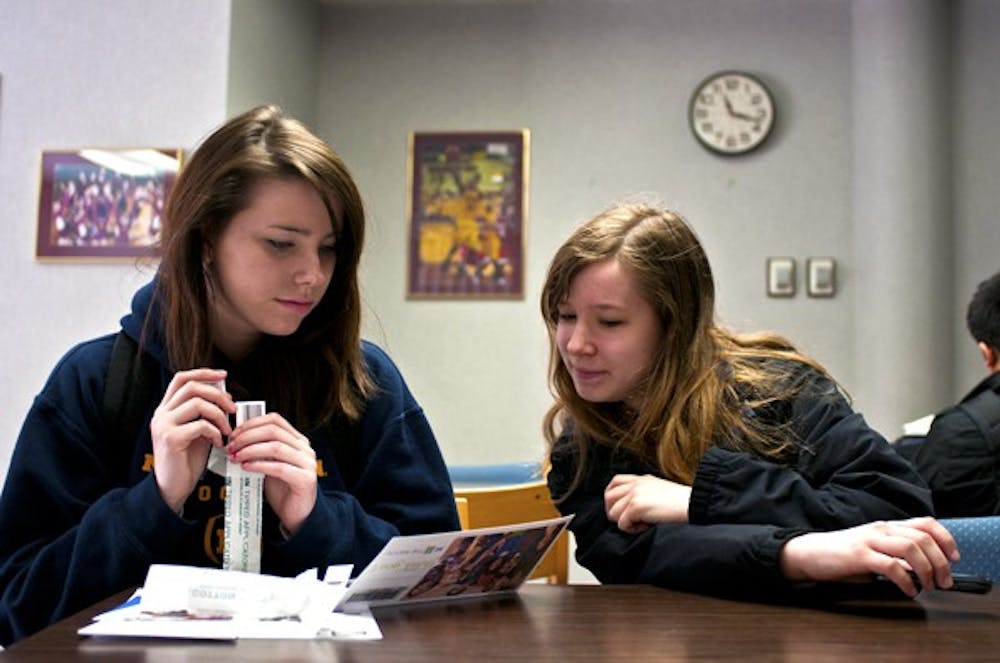36 students hope to 'Be The Match' during Bone Marrow Registry Tuesday
Bay City senior William Rieffel walked into the Bovee University Center Chippewa room with his skateboard in hand eager to sign up for the Central Michigan University Bone Marrow Registry.
Rieffel was one of 36 students who decided to dedicate 10 minutes of their time Tuesday afternoon swabbing the inside of their cheeks in the Bovee University Center room 220 to determine if they were a match for University of Michigan student Daniel Lee and others in need of bone marrow transplants. He said he heard about the registry through a mass text and decided to come.
"Why not help someone if they need it, it's simple enough. If you have the ability to help someone, why be greedy and hold back?" Rieffel said. "If I were called back, I would donate right away, no questions asked."
The Bone Marrow Registry event was created by Northville senior Paul Young and assisted by the Asian Cultural Organization. Young began mobilizing the registry after he felt the need to help his friend Lee who suffers from aplastic anemia, a condition that prevents new blood cells from forming.
The event involved filling out a form that asks for health history, general contact information and ethnicity details. When students walked in, they were assisted by a member of ACO or Kona Kenny, the registry event coordinator at Michigan Blood, the local chapter of Be the Match.
Kenny introduced factual information to students about the process of what may happen if they were called back to actually donate. After the form was filled out, students simply swabbed four times, placed the swabs in envelopes and put the completed swabs in a bin. The registration is not law abiding, meaning if students decide to change their mind when they are called back, they are allowed to do so. Once registered, a person remains on the list until they are 61.
Kenny said there are plenty of myths regarding bone marrow donation, including the amount of pain in the procedure and damage being done to bones or bone marrow.
"People are often scared away from registering or later donating by the many horror stories," Kenny said. "A lot of people bring up the movie 'Seven Pounds,' where Will Smith undergoes an extremely painful surgery to extract his bone marrow. It's all false."
There are two methods of bone marrow extraction, Kenny said. One is similar to a plasma donation and the other involves a small incision about the size of the tip of a fingernail in the pelvic bone with a small needle to extract liquid marrow. During the second surgical option, anesthesia will be used so the donor will feel no pain. Kenny said a donation is no cost to the donor. Michigan Blood will provide transportation and hotel room accommodations if a donor has to travel.
The need for bone marrow registries is high, because out of the 9 million people currently waiting for a match, four out of 10 actually find one, she said. Diversity in the registries is also important, because a person has a higher chance of finding a match with someone who is of the same ethnicity.
"People should really put themselves out there if they're interested, because you never know if you're an actual match for someone in need," Kenny said.
Many swabbers were pleased with the process, and said the hardest part was trying to stuff the cotton swabs into the foam holders.
Greenville sophomore Morgan MacDermaid said she saw the signs posted around campus and felt the need to register.
"I know that if it were me, I would want as many people to register," MacDermaid said. "This is a great program, I'm glad I joined the registry. This is something that everyone should do"




